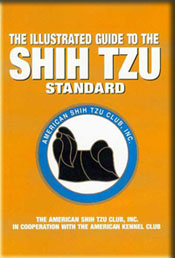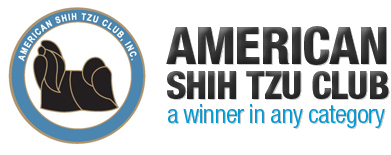The Illustrated Guide To The Shih Tzu Standard | Coat, Trimming, Color and Markings
 CONTENTS: Front Cover | Preface | History | Anatomy | Standard | General Appearance | Size, Substance | Proportion | Head | Neck, Body | Topline | Tail | Forequarters | Hindquarters | COAT, TRIMMING, COLOR AND MARKINGS | Gait
CONTENTS: Front Cover | Preface | History | Anatomy | Standard | General Appearance | Size, Substance | Proportion | Head | Neck, Body | Topline | Tail | Forequarters | Hindquarters | COAT, TRIMMING, COLOR AND MARKINGS | Gait


COAT – Luxurious, double-coated, dense, long, and flowing. Slight wave permissible. Hair on top of head is tied up. [Fault: Sparse coat, single coat, curly coat.] CLARIFICATION: The coat should never appear sparse or be sparse upon examination. The Shih Tzu undercoat should be soft and dense, and the outer coat should be somewhat harder and perhaps lay flatter than the undercoat. A single coat refers to a coat without the desired undercoat present. The hair on the head is generally gathered up with the use of rubber bands and a bow. The standard is not specific on how it is to be tied up, or with what. Therefore, sufficient examination of the structure of the head beneath the hair is crucial.
TRIMMING – Feet, bottom of coat, and anus may be done for neatness and to facilitate movement. [Fault: Excessive trimming.] CLARIFICATION: The hair between the pads on the bottom of the feet may be removed. The hair on the feet may be shaped or trimmed. The bottom of the coat may be evened or trimmed to ground length if necessary. The hair around the anus and the base of the tail may be removed. Excessive trimming sometimes involves removing patches or hair around the neck, shoulders, and chest with clippers or scissors and should be considered excessive trimming.
COLOR AND MARKINGS – All are permissible and to be considered equally. CLARIFICATION: All colors and markings are permissible and no color or marking should take preference over another. Dark faces or uneven markings should not be penalizes and are quite acceptable.
